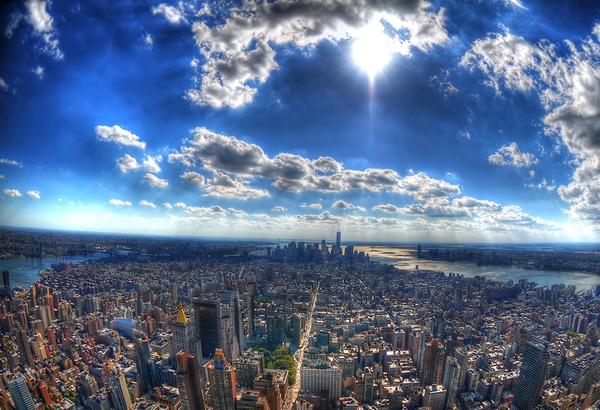< Back to all posts
What is HDR and How Does it Compare to 4K?
If you’re using anything from a professional camera to a smartphone, you’ve probably noticed a setting called “HDR.” Unfortunately, many people have no idea what exactly this means. To help you out, we’re going to explain exactly what HDR is, and why it matters for your business.
What is HDR?
HDR stands for high dynamic range. It’s been around the industry for about 40 years, but only recently have we seen mainstream products emerge that can take advantage of it. HDR works by combining two images that are taken at different times to dim extreme highlights and darken shadows. It works in the same basic way on your smartphone, as well.
When you take a picture with HDR enabled on your smartphone, you’ll notice that it takes two separate pictures – one light and one dark. It then morphs them together to achieve the clearest resolution possible. Turning this feature on is extremely simple, it’s usually located at the top of your screen whenever you take a picture. However, it’s quickly becoming the most efficient alternative to using 4k cameras for many companies. For more information on how HDR works, click here.
What’s the Difference Between 2k and 4k?
Most organizations operate using 2k cameras, meaning that the camera records 2,048 pixels and has no vertical resolution. Most digital cinema projects use 2k resolution, so this is usually what you see in movie theaters and on your television at home. As of late, however, 4k cameras are growing in demand due to their higher resolution and clearer images. 4k cameras record 4,096 pixels, almost twice that of 2k cameras. It’s no surprise that as technology progresses, people continue to want better and clearer pictures. Further comparisons between 2k and 4k cameras can be found here.
Unfortunately, you cannot simply upgrade a camera from 2k to 4k by clicking a button. 4k cameras are extremely expensive because they create such alluring images. Before HDR, camera operators were at a loss as to how to get such crisp, vivid pictures without breaking the bank. You will find a detailed comparison of shooting from a 4k camera versus HDR here.
Why HDR is Better
- A more dynamic range can improve how a scene looks, especially if harsh lighting is involved.
- 4k involves buying a whole new camera, while HDR is a feature found on many types of cameras that improves quality with the click of a button.
- HDR works by presenting and preserving all image details from the brightest highlights to the darkest shadows.
It’s no wonder that many corporations are quick to jump on the HDR bandwagon rather than spending thousands of dollars to upgrade to 4k. In the next seven years, the HDR market is expected to increase to $36.82 billion because of the growing demand for great resolution on all screens.

If you’re interested in working with HDR with one of our crews, click here for a free quote! Also, make sure to check us out on Twitter, Facebook, and LinkedIn.







Leave a Reply